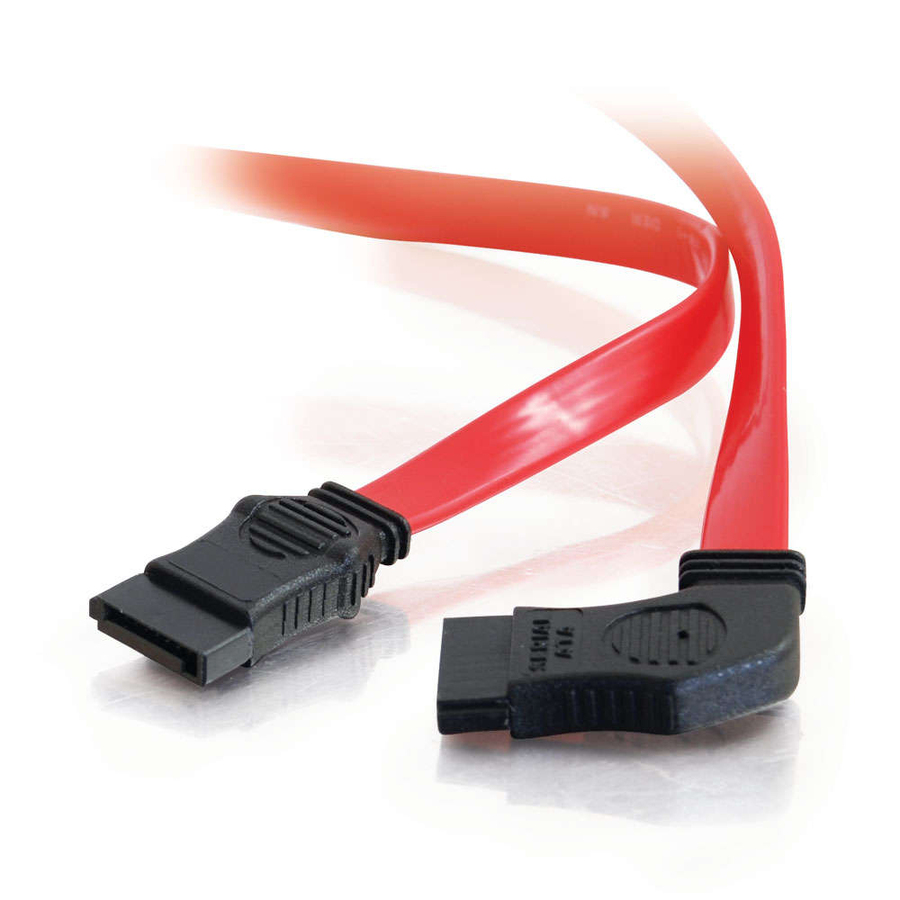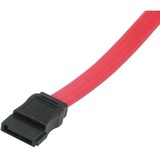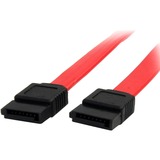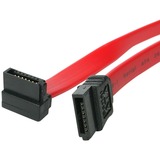|
Manufacturer |
Legrand Group |
|
Manufacturer Part Number |
10187 |
|
Manufacturer Website Address |
http://www.legrand.us |
|
Brand Name |
C2G |
|
Product Name |
36in 7-pin 180° to 90° 1-Device Side Serial ATA Cable |
|
Marketing Information |
When connecting serial ATA devices to your motherboard or host controller, you want a permanent solution. The last thing you need is a cable that could fatigue, or even fail over time, because of bending or stress occurring right at the critical connection. Our angled connectors deliver the cable at a more desired angle and are fortified to keep the cable lined up straight. So you'll see less cable bend and fatigue for longer cable life.
SATA 3.0 compatible with transfer rates up to 6 Gbps! This serial ATA cable is especially designed to handle the differential signals implemented in today's technology, while delivering increased throughput and reduced data packet loss.
With our 7-pin, 1-device cable, you'll receive higher data transmission rates, reduced crosstalk, and improved signal integrity.
Plus, this cable reduces overheating and saves internal space within the CPU unit for easy movement when adding or removing hard drives, PCI cards or other adapters. Our serial ATA cable can minimize clutter, increase airflow and maximize your potential transfer rate. |
|
Packaged Quantity |
1 Each |
|
Product Type |
Data Transfer Cable |
|
Cable Type |
SATA |
|
Cable Length |
3 ft |
|
Connector Type on First End |
SATA - Female |
|
Connector on First End Details |
1 x 7-pin SATA - Female |
|
Connector Type on Second End |
SATA - Female |
|
Connector on Second End Details |
1 x 7-pin SATA - Female |
|
Conductor |
Copper |
|
Device Supported |
- Motherboard
- Controller
- Hard Drive
- PCI Card
|
|
Data Transfer Rate |
6 Gbit/s |
|
Features |
- Crosstalk Protection
- 180° Angled Connector
|
|
Color Family |
Red |
|
Product Color |
Red |
|
Weight (Approximate) |
0.07 lb |
|
Additional Information |
- Supports transfer rates of up to 3G depending on the peripherals used
- Permit higher data transmission rates, reduce crosstalk, and improved signal integrity
|
|
Limited Warranty |
Lifetime |
-
-
-
Product Code: STCSATA36RA1
‹
›
We are sorry but no alternatives are currently available, we are working on getting this back in stock as soon as possible.







